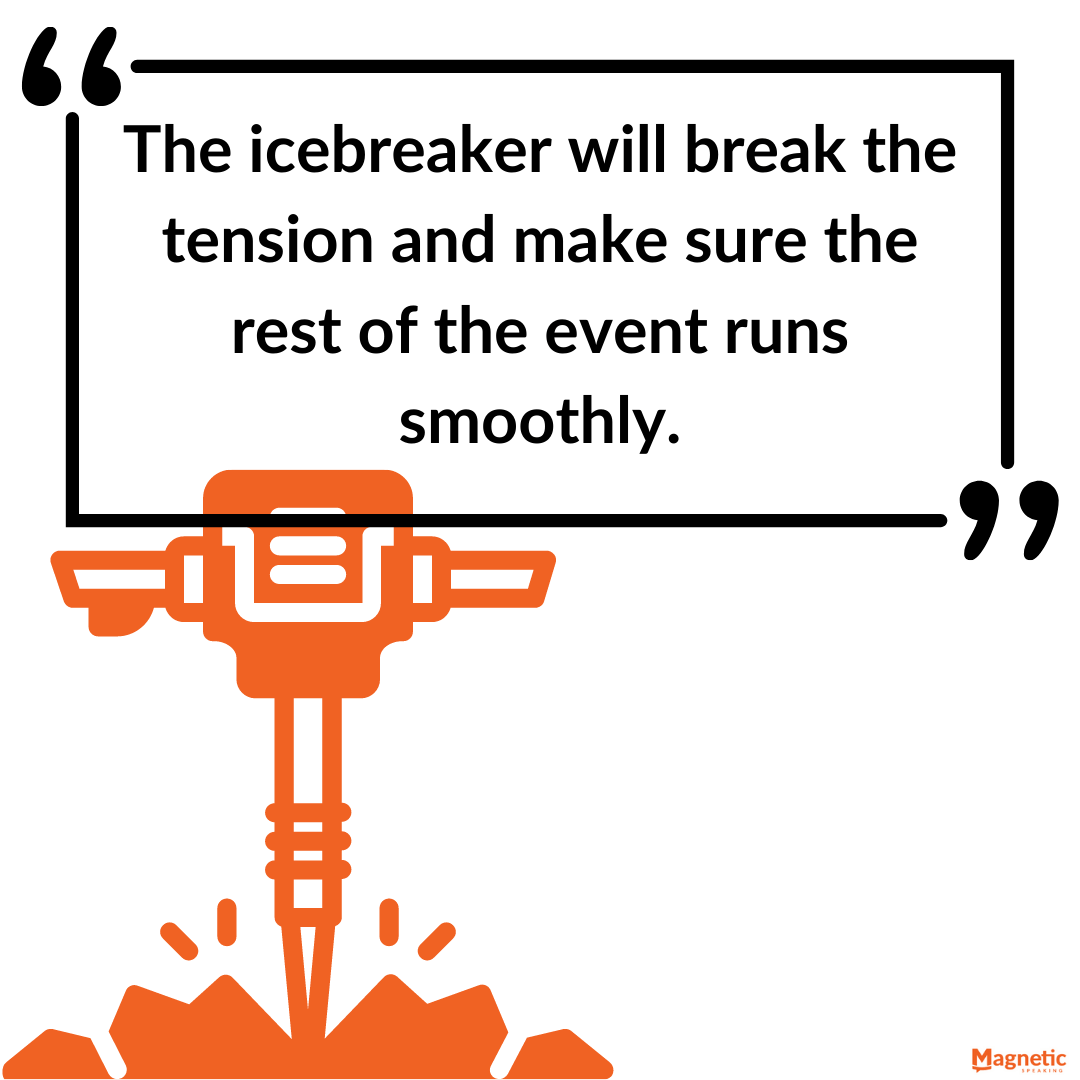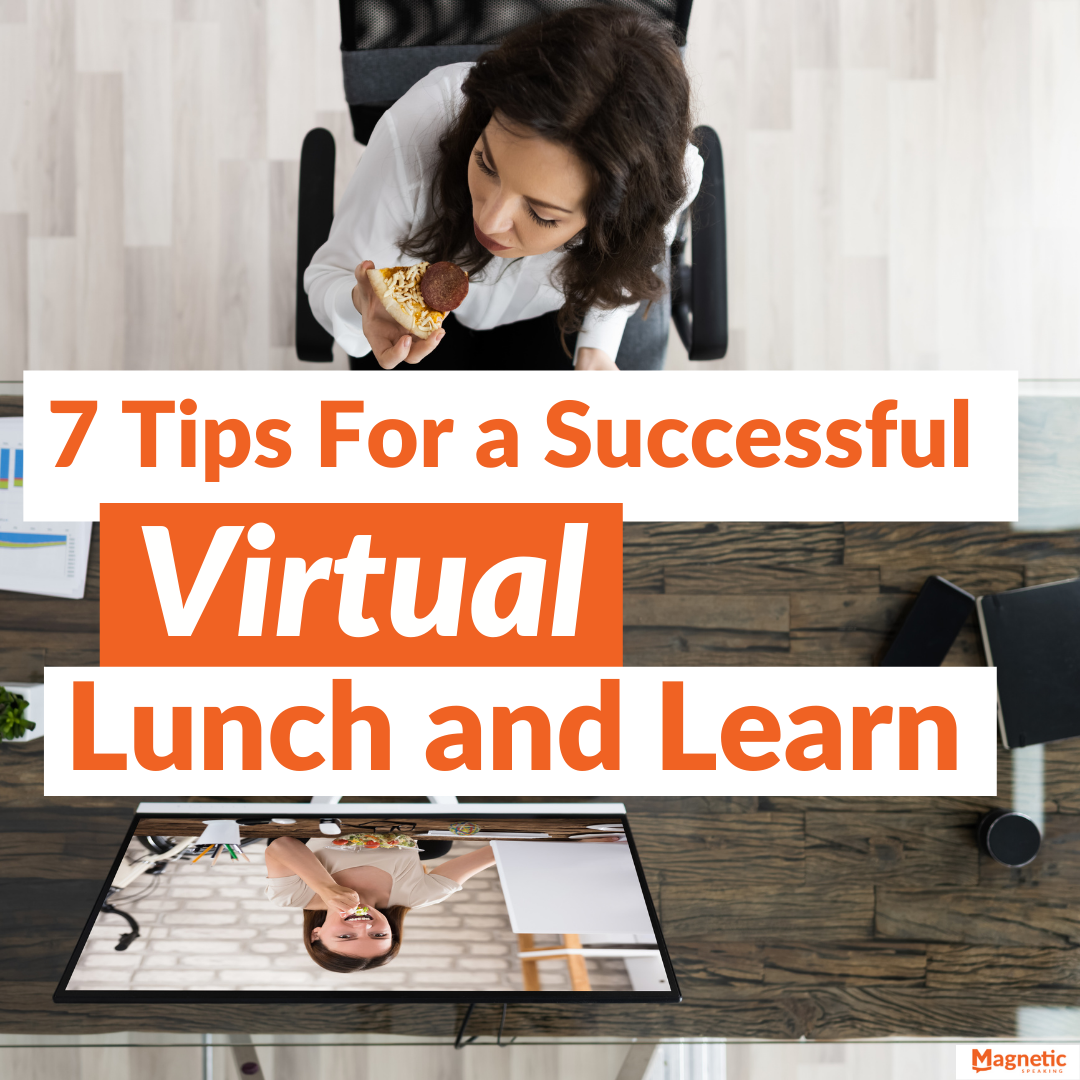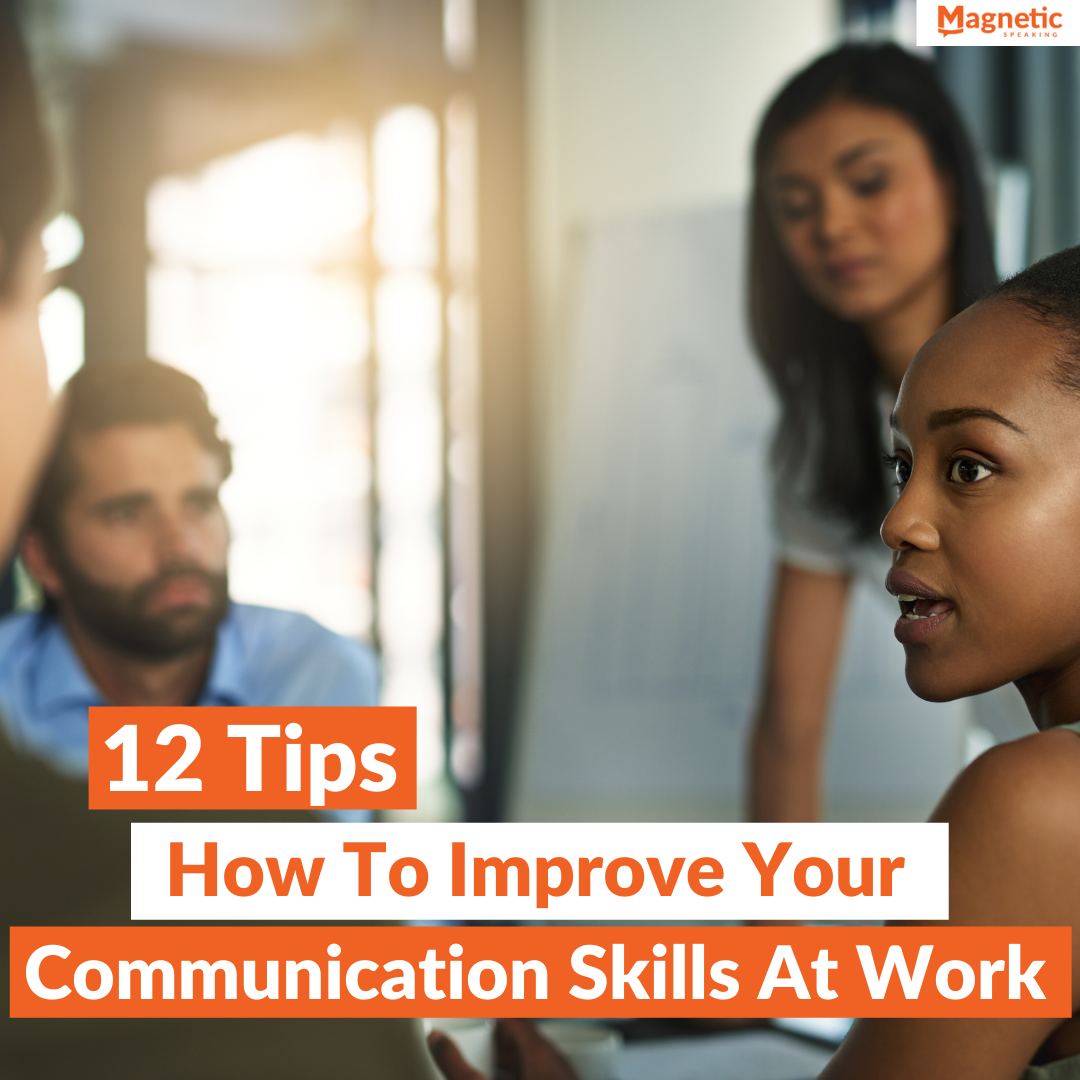You know that lunch and learns are great for your organization and team. But can they work in a virtual environment?
The answer is a resounding yes!
A virtual lunch and learn can be equally effective, if not more effective, than the in-person ones.
According to a recent client survey, virtual lunch and learns are easier to set up and have greater attendance than in-person ones. That’s a win for virtual!
What is a lunch and learn how is it different when virtual?
Lunch and learns are voluntary 30 minutes to 1-hour meetings hosted by an organization for employees and sometimes customers. Typically it’s hosted during lunchtime, and the organizer brings in food.
In a virtual lunch and learn, people can bring their food, and it doesn’t have to be hosted during standard lunchtime. Sometimes, organizations may even give everyone a food stipend from a takeout service.
Topics for lunch and learns are flexible. They can be as general as a book discussion or as specific as a product walkthrough.
Here’s an example of a successful “Lunch and Learn” topic:
One of our clients recently hosted a lunch and learn for her team about First in Class Vs. Best in Class for a biotech company. It turns out that for tech companies, best-in-class is usually the winner, but for Biotech, first-in-class is the winner. She shared her findings with the team at a lunch and learn, everyone learned something, and she got visibility for her research.
If you have great ideas for lunch and learn topics or had great experiences with them, please share in the comments below so that everyone can learn!
So as seen in that example, lunch and learns are a great way to have team members share their knowledge and expertise and for the team members to connect and learn from each other. According to the American Association of Management, a lunch and learn can be used to enhance morale, increase engagement, and give visibility to team members and projects in the company.
Just like with in-person lunch and learns, there are a few things to keep in mind to make sure that the event is successful and valuable for the participants. Below are seven tips:
1. Survey in advance
You don’t want to host a Lunch and Learn that people don’t perceive as useful. That’s why it’s always a good idea to put a feeler out before you commit to one.
Ensure that you do an informal survey of your colleagues to make sure the times and topics work. This is an important step because Lunch and Learns are voluntary, and people attend because they want to attend, not because they have to.
The client we mentioned above did an informal survey about a couple of topics before committing to hers. The interesting thing is that an executive in the company heard about the topic and decided to join along with 9 more colleagues.
2. Decide and communicate about food
In lunch and learn, a “Lunch” is implied. So don’t sweep that under the rug if you are doing a virtual meeting.
Typically, in an in-person meeting, the organizer brings lunch. In a virtual meeting, the organizer does not have to bring lunch but has to let people know to get their food or drinks depending on the hosting time.
If your HR has a budget, you can get people a stipend to order on that day. We at Magnetic Speaking do this every once in a while, and it creates an amazing communal feeling during that hour.
3. Promote the event

No one attends anything they don’t know about. If you want people to participate in the lunch and learn, then you need to promote it.
It’s a good idea to do a private invite to key people and get their commitment first. Then from there, mass promote with an email or a general Slack message to a broader audience. How broad of an audience? It depends on you and what you want to accomplish.
We have clients that promote it to their small cross-functional team after getting their manager on board. We also have clients who promote it to the whole sales organization and get the sales VP involved.
I like the smaller and more intimate lunch and learns to maximize the Q&A and discussion times.
4. Communicate virtual logistics clearly
Send calendar invites with Zoom (or any virtual tool you use) links embedded. This will get people to block off their calendars and have all the information they need to log in.
People don’t like surprises, so it’s good to be upfront with expectations. Make sure you share a quick agenda on the invite of the topic and the flow. If you want people to participate in the discussion and do Q&A, make sure you telegraph that with the agenda you sent them.
Here is an example of an agenda:
Topic Title:
Why this is relevant:
Presentation time:
Q&A time:
Additional notes: Please bring your own food, drinks, and questions 🙂
5. Create an Icebreaker

There is always “tension” around social and work events. That’s normal. All you need to do is break the ice, and things will be fine.
The trick for breaking the ice is to keep it simple. An excellent way to break the ice is to have people go around and introduce themselves. If you try to complicate the icebreaker, then you will create more unnecessary awkwardness and tension. Again, keep it simple.
The icebreaker will break the tension and make sure the rest of the event runs smoothly.
If you want more tips on Icebreakers, check out this article.
6. Get people engaged
If you want the virtual lunch and learn to happen again, then make it engaging. If you wish to do a data dump, then a lunch and learn might not be the best format. People want to attend a lunch and learn for the social benefit and the learning they get.
So keep people engaged during the session. This doesn’t have to be complicated, either. Just make sure that every 5-10 minutes, you check with attendees. If you want to be more engaging, consider asking questions, provoking discussions, and using the break-out feature on Zoom, etc.
If being engaging is an area you need support with, check out the Delivery Bootcamp training.
7. Get feedback and schedule the next one
Learning happens directly after feedback. It’s important to look at the lunch and learn as a learning experience for you (the person running it) and the audience attending. If you want to get better, it’s a good idea to get feedback from the attendees.
- Make sure that you get feedback on what they liked and what they did not like.
- Make sure you ask them if they would like to see more lunch and learn events happen and get their input on future speakers and topics.
Most likely, your colleagues got something out of the session, and they would want more. In that case, it’s good to take the learning and run another event soon with someone else as the speaker.
Lunch and learns are a great way to connect the team and have them learn from each other. Now you can do it virtually across many geographies and timezones at the convenience of participants’ homes. Why not leverage that?
I challenge you to pitch your first lunch and learn to your team this week, and you’ll be surprised at how receptive and eager they will be.




